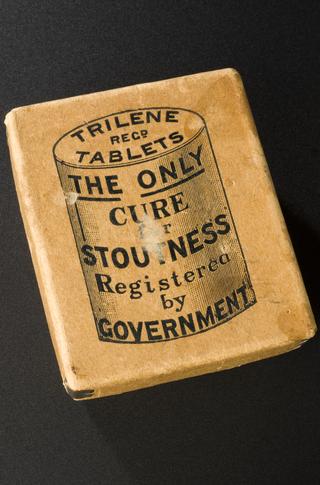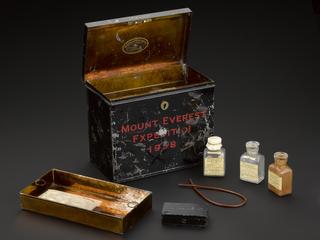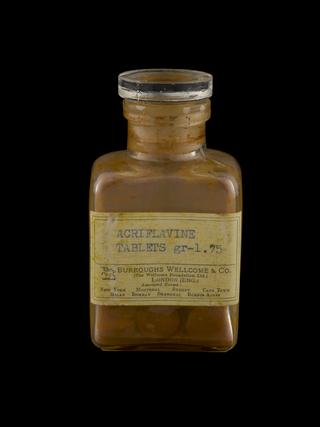






Packet of quinine powder, as sold in post offices in India, 1890-1900
In 1820, Pierre Joseph Pelletier (1788-1842), a French chemist, and Joseph Caventou (1795-1877), a French pharmacist, isolated quinine and extracted it from cinchona bark. Quinine was used as a treatment for malaria because of its fever reducing and pain relieving qualities.
Details
- Category:
- Materia Medica & Pharmacology
- Collection:
- Sir Henry Wellcome's Museum Collection
- Object Number:
- A654789
- Materials:
- packet, paper
- Measurements:
-
overall: 1 mm x 63 mm x 38 mm, .0005 kg
- type:
- packets
- credit:
- Loan, Wellcome Trust

